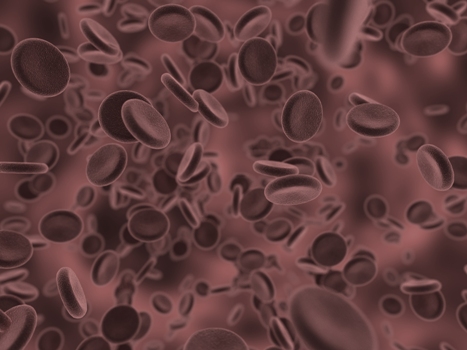
What Are White Blood Cells?
White blood cells (leukocytes) are cells of the immune system that defend the body against infections and foreign particles. Hematopoietic stem cells in the bone marrow produce white blood cells. The cells are present throughout the body, including the blood and lymphatic system. There are typically 4,500 to 10,000 white blood cells per microliter (mcL). The white blood cells in the body are often a sign of an ongoing disease process in the body. A higher number of white blood cells in the blood is leukocytosis, and a decreased number of cells is leucopenia. The five types of white blood cells are basophils, eosinophils, neutrophils, monocytes, and lymphocytes (T cells and B cells).
- Important notification about information and brand names used in this slideshow!
- Photo courtesy by gerard79 by sxc.hu : www.sxc.hu/photo/1153649
- en.wikipedia.org/wiki/White_blood_cell
- http://www.nlm.nih.gov/medlineplus/ency/article/003643.htm

Types Of White Blood Cells
There are many different types of white blood cells, all of which differ distinctly in form and function. One of the main characteristic features of white blood cells is the presence of granules, and depending on the presence or absence of granules, they are referred to as granulocytes and agranulocytes. Granulocytes are unique by the presence of differently staining granules, which can be viewed under light microscopy. The granules are enzymes with a surrounding membrane. The three types of granulocytes are neutrophils, basophils, and eosinophils. They are classified depending on their staining abilities. Neutrophils defend the body against bacterial or fungal infections. Eosinophils defend against parasitic infections. They also play a primary role in allergic reactions such as asthma, hay fever, and hives. Basophils are responsible for releasing histamine causing vasodilation. Agranulocytes are differentiated by the lack of cytoplasmic granules. The three types of cells are lymphocytes, monocytes, and macrophages.
- Important notification about information and brand names used in this slideshow!
- Photo courtesy of andrejanel by sxc.hu : www.sxc.hu/photo/1380712
- en.wikipedia.org/wiki/White_blood_cell
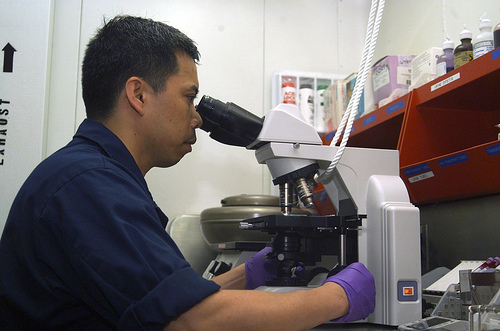
What Does Elevated White Blood Cells Level Mean?
A complete blood count or CBC is a measurement of the number of blood cells in the blood including red blood cells, white blood cells, and platelets. White blood cells defend the body’s immune system by warding off infections and a high white blood cell count indicates infection in the body. Normally, the white blood cell count ranges from 4,500 to 10,000 cells per microliter. However, during an infection this number can rise significantly. Your doctor will order a differential count to identify the type of white blood cell and get a clue of the type of infection in the body. A higher number of eosinophils indicates an allergic process like asthma. Certain medications can increase the white blood cell count. Illnesses such as leukemia and arthritis spike the levels of white blood cells.
- Important notification about information and brand names used in this slideshow!
- Photo courtesy of LBC by Flickr : http://www.flickr.com/photos/lscareers/6303183970/
- voices.yahoo.com/what-does-mean-high-white-blood-3416304.html?cat=5

Normal Elevation Of White Blood Cells (Pregnancy, Newborn Babies, Etc.))
Although elevated white blood cell count generally indicates an infection, sometimes an elevated white blood cell count can occur in normal conditions. In newborn infants, the white blood cell count can range from 9,000 to 30,000 with the levels normalizing within 10 to 15 days after birth. Initially the percentage of neutophils is noticeably higher after birth, but within a few weeks, the percentage of lymphocytes increases. In young children below 8 years of age, lymphocytes are higher than neutrophils. Leukocytosis or elevated white blood cell count is common during pregnancy with increased neutrophils and only a slight increase in lymphocytes. Several physiologic changes occur in the maternal organs during pregnancy, which return to normalcy after delivery. White blood cell count increases slightly to 9,000 to 12,000. It increases to greater than 20,000 during labor and the first few days of postpartum.
- Important notification about information and brand names used in this slideshow!
- Photo courtesy of Il-young Ko by Flickr : www.flickr.com/photos/ilyoungko/6175321766/
- voices.yahoo.com/what-does-mean-high-white-blood-3416304.html?cat=5
- http://www.rnceus.com/cbc/cbcwbc.html
- http://www.merckmanuals.com/professional/gynecology_and_obstetrics/normal_pregnancy_labor_and_delivery/physiology_of_pregnancy.html
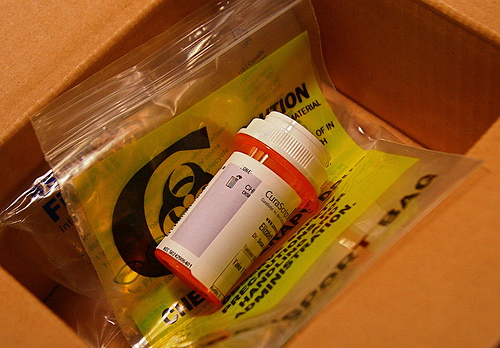
Medication And High White Blood Cells
One of the causes of elevated white blood cell count are medications. Steroid medications, anti-seizure medications, antibiotics, asthma medications, and the drug lithium are known to cause leukocytosis. Specifically, allopurinol, aspirin, chloroform, epinephrine, heparin, quinine, and triamterene raise white blood cell count. Corticosteroids cause an increase in release of white blood cells from bone marrow and a slower rate of removal from the vasculature. Neutropenia or low white blood cell count can result from certain illnesses and treatments for cancer such as chemotherapy. Some drugs can safely increase the level of white blood cells after chemotherapy and prevent dangerous infections. These drugs are Neulasta, Neupogen, and Leukine.
- Important notification about information and brand names used in this slideshow!
- Photo courtesy of liz west by Flickr : www.flickr.com/photos/calliope/2989567835/
- voices.yahoo.com/what-does-mean-high-white-blood-3416304.html?cat=5
- http://www.nlm.nih.gov/medlineplus/ency/article/003643.htm
- http://www.livestrong.com/article/108421-medications-boost-white-blood-cells/

Infection Can Cause High White Blood Cells
White blood cells defend the body’s immune system and destroy invading bacteria, viruses, and other foreign bodies. When bacteria enter the blood stream and multiply rapidly, white blood cells try to destroy it before it can spread the infection. To combat an army of bacteria, bone marrow releases large numbers of white blood cells into the blood stream with a resultant spike in white blood cell count. An infection can cause elevation in white blood cell count by this mechanism. Leukocytosis is prevalent in acutely ill patients in response to conditions including bacterial, viral, fungal, or parasitic infections. Patients suffering from acute lymphocytic leukemia present with elevated white blood cell counts because the condition affects bone marrow.

Other Causes, Allergy, Tuberculosis, Smoking, Etc.
An elevated white blood cell count generally indicates the presence of an infection in the body. However, there are several other causes of elevated white blood cell count. Drug reactions may elevate white blood cells. A diseased bone marrow can cause unusually elevated levels of white blood cells. Some specific reasons for elevated white blood cell count are given below: Acute lymphocytic leukemia Allergy and severe allergic reactions Chronic lymphocytic leukemia Corticosteroids and epinephrine Some kinds of bacterial infections Certain viral infections Polycythemia vera Pregnancy Rheumatoid arthritis Removal of spleen Smoking Stress, both physical and emotional stress Tuberculosis Whooping cough The doctor will order a differential count to diagnose the cause of leukocytosis.

Leukemia
Leukemia or blood cancer is caused due to rapid production of abnormal white blood cells that are unable to fight infection and impair the ability of the bone marrow to produce red blood cells and platelets. Leukemia can be chronic or acute. Acute leukemia requires prompt treatment. Leukemia can also be myelogenous or lymphocytic. In lymphocytic leukemia, the abnormal cells are lymphocytes and in myelogenous leukemia, the abnormality occurs in bone marrow cells that mature into red blood cells, white blood cells, or platelets. The main four types of leukemia are: 1. Acute lymphocytic leukemia (ALL) 2. Acute myelogenous leukemia (AML) 3. Chronic lymphocytic leukemia (CLL) 4. Chronic myelogenous leukemia (CML) Symptoms of leukemia include fever, chills, night sweats, weakness, fatigue, bone pain, weight loss, etc.
- Important notification about information and brand names used in this slideshow!
- Photo courtesy of beepyayX_X by Photobucket : media.photobucket.com/user/beepyayX_x/media/School/cancer_patient.jpg.html?filters[term]=cancer%20patient&filters[primary]=images&sort=1&o=136
- voices.yahoo.com/what-does-mean-high-white-blood-3416304.html?cat=5
- http://www.hematology.org/Patients/Blood-Disorders/Blood-Cancers/5230.aspx

When To See A Doctor?
When your doctor has ordered blood tests to diagnose your symptoms, your elevated white blood cell count may be noticed. It is rarely an accidental finding. Your doctor should explain to you what the elevation of white blood cells means. It is likely that you will need further tests to diagnose your condition. You must see a doctor if you experience any of the following: Fever Easy bleeding or bruising Weight loss Nausea Weakness and fatigue Dizziness or fainting spells Other symptoms may include tingling in the arms, legs, or abdomen; trouble with vision; and weight loss. If any of these symptoms worse, seek medical help immediately.




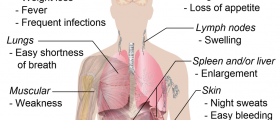

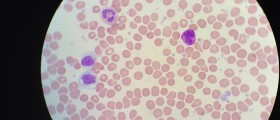


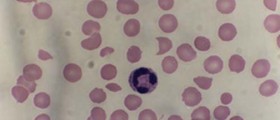









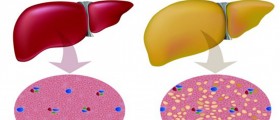






Your thoughts on this
Loading...